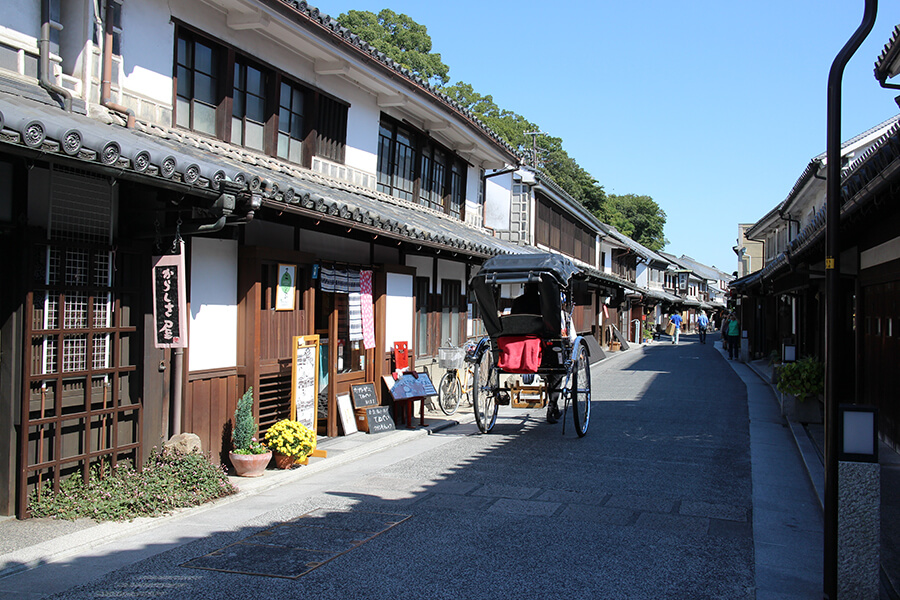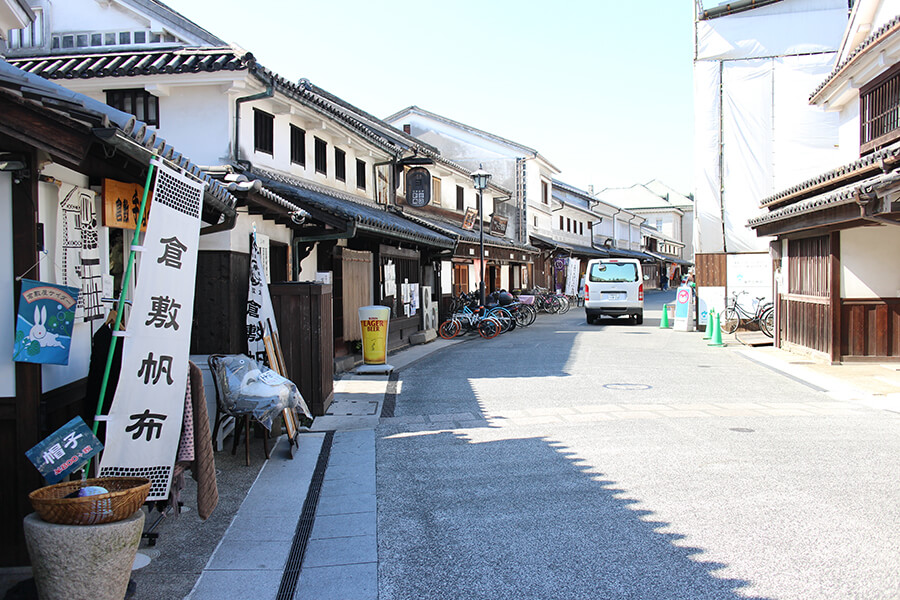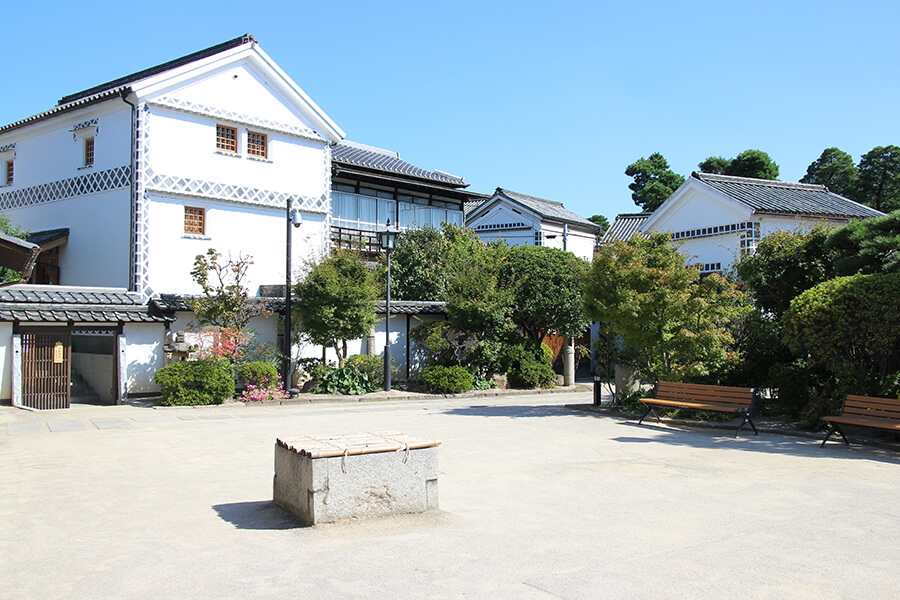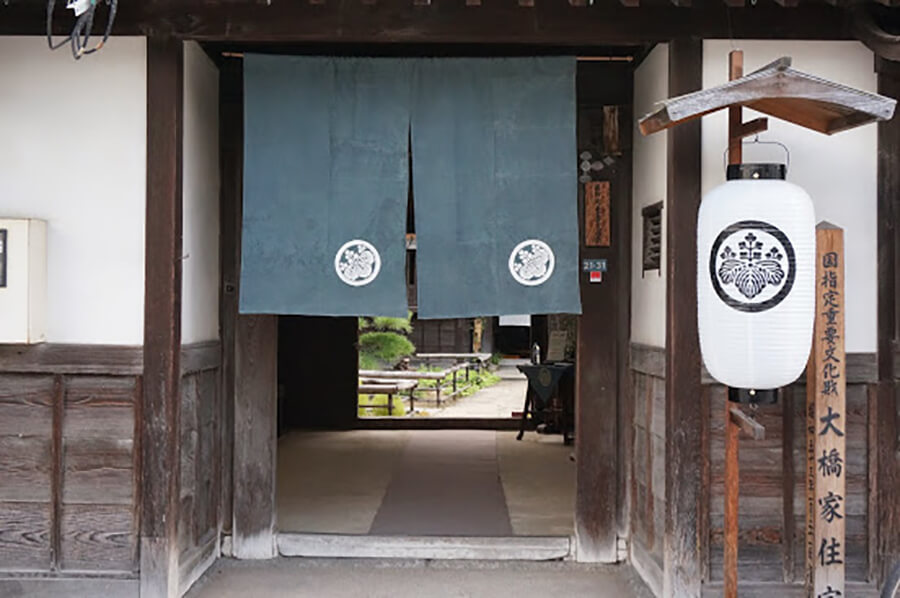TOURISM
INFORMATION
- HOME
- Tourism Information
- Kurashiki Higashimachi

As it continues from Honmachi Street, Higashimachi Street is also a street where you can feel the exquisite harmony between history and everyday life. It has a more relaxed atmosphere than Honmachi Street and is less touristy, so you can get a glimpse of the quiet lives of the people. Starting with the grand presence of the Kusunoki family, a kimono merchant, the eaves roof signs and remnants of wells that can be seen here and there in the old townscape, this is a street where you can feel the unique charm of Kurashiki.
The Kurashiki Byobu Festival is held every year in mid-October, attracting many visitors.
Access Map
OTHER
INFORMATION
-
Kurashiki Honmachi Street

Kurashiki Honmachi Street, located on the north side of the Kurashiki River, is a street lined with lacquered townhouses, giving off a down-to-earth atmosphere. This area still retains many vestiges of the Edo period, but it is also lined with many old shops and residences closely linked to daily life, making it a vibrant place where you can feel the lifestyle and breath of the people who live there.
VIEW MORE
Recently, there has been a surge in efforts to revive these townhouses, and a variety of shops have opened in renovated houses, including Kurashiki canvas shops, a traditional craft, hat shops, boutiques, galleries, cafes and ice cream shops, and the area continues to transform into an interesting mix of "tradition" and "modern." You can stroll around the area enjoying the relaxed atmosphere and bubbling energy. -
Kurashiki Story Museum

Kurashiki Monogatarikan was constructed in the mid-Edo period, and its dignified Nagayamon gate on the south side, the alley on the west side, and the four storehouses create a beautiful and calm atmosphere, conveying the atmosphere of the Edo period to the present day.
VIEW MORE
The Kurashiki Story Hall was renovated by the city of Kurashiki from the former Higashi Ohashi family home, and opened in 2009 as a tourist hub to improve the mobility of tourists visiting Kurashiki, and as a place for cultural exchange and activities for local residents. As it is located at the entrance to the scenic area, it plays the role of first conveying the "Kurashiki-ness" to tourists visiting the scenic area.
The main Nagayamon gate is used as a tourist information corner, and the first floor of the two-story wooden main building in the center of the site houses an exhibition corner that conveys the traditional townscape of Kurashiki. Other facilities include a multi-purpose hall, exhibition room, and cafe. -
Nationally designated important cultural property Ohashi family residence

The Ohashi Family Residence is a beautiful townhouse unique to Kurashiki that has been designated an Important Cultural Property. Its unique layout features a row house facing the main road, with the main house on the inside separated by a front yard, and the main entrance runs through the row house. The main house is a multi-story building with a hip-and-gable roof and real tile roof, with a room and a cabinet in the attic, Kurashiki lattice on the first floor and Kurashiki windows on the second floor. The rice storehouse and internal structure are built using earthenware and feature "namako walls," and there is a single-story sitting room to the east. It is a simple but beautiful townhouse unique to Kurashiki.
VIEW MORE
The Ohashi family were large landowners in Kurashiki in the late Edo period who made their fortune through the development of salt fields and new rice fields. Together with the Ohara family, they formed an emerging power group known as "Shinroku" and reached the height of their prosperity.
The Ohashi Family Residence gives us a glimpse into the high-class and dignified lifestyle of the Ohashi family and the splendor of the prosperity of the Shinroku era at that time.

